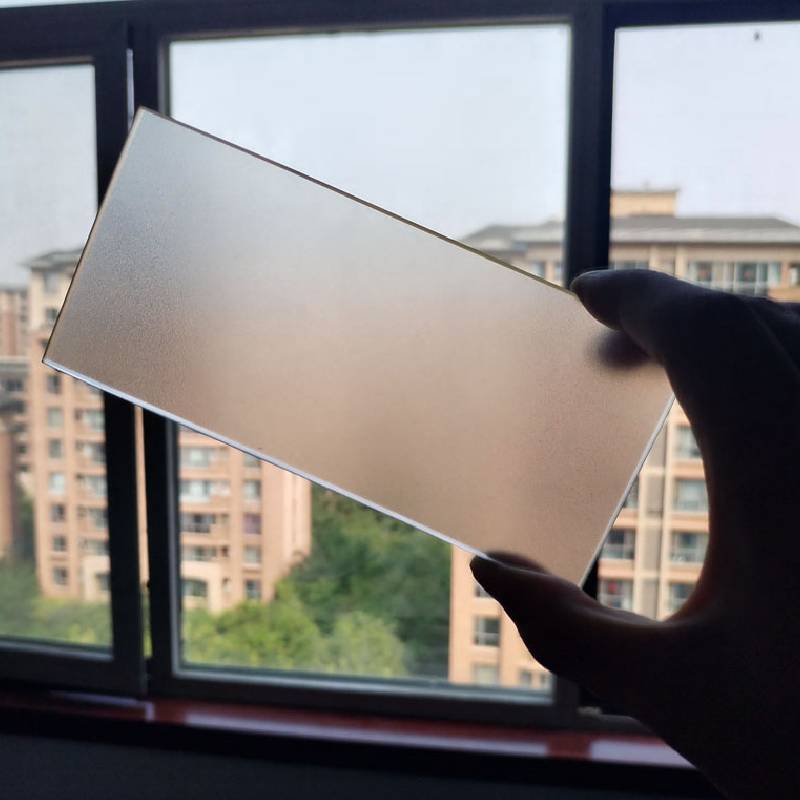Exploring Glass Pattern Textures A Blend of Art and Design
Glass has long been celebrated for its versatility and aesthetic appeal in both functional and decorative applications. Among the myriad of techniques employed in glassmaking, the creation of textured glass patterns stands out as a brilliant fusion of art and engineering. These patterns not only enhance the visual interest of glass but also serve practical purposes, making them a fascinating subject for exploration.
Textured glass is created through various methods, including molding, embossing, and etching. Each technique offers unique possibilities, transforming plain sheets of glass into vibrant works of art. For instance, sandblasting creates a frosted appearance that diffuses light beautifully, while embossed glass displays intricate designs that play with reflection and transparency. These textures can be further enhanced with color, adding depth and complexity to the final product.
One of the most captivating aspects of glass pattern textures is their ability to interact with light. The way light refracts and reflects off different textures can significantly impact the ambiance of a space. For example, in architectural applications, textured glass can be used in windows, partitions, and skylights to create mesmerizing effects that change throughout the day as lighting conditions shift. This dynamic quality can transform an otherwise dull environment into a vibrant and engaging space.
glass pattern texture
In interior design, textured glass is a popular choice for various applications, including cabinetry, room dividers, and decorative panels. The subtle play of light and shadow created by textured surfaces adds depth and character to any room, often becoming a focal point. Designers appreciate how these glass textures can complement a wide range of styles, from contemporary minimalism to eclectic bohemian themes.
Moreover, the use of patterned glass extends beyond aesthetic considerations. In functional applications, such as shower doors or office partitions, textured glass offers increased privacy while maintaining a sense of openness. This dual functionality makes it a favorite among architects and designers aiming for harmony between form and function.
In conclusion, the world of glass pattern textures is a rich field that beautifully marries artistic expression with practical application. As technology advances, new techniques and innovations continue to emerge, promising even more exciting possibilities for the future. Whether in architecture, interior design, or fine art, textured glass remains a timeless element that captivates and inspires.
 Afrikaans
Afrikaans  Albanian
Albanian  Amharic
Amharic  Arabic
Arabic  Armenian
Armenian  Azerbaijani
Azerbaijani  Basque
Basque  Belarusian
Belarusian  Bengali
Bengali  Bosnian
Bosnian  Bulgarian
Bulgarian  Catalan
Catalan  Cebuano
Cebuano  Corsican
Corsican  Croatian
Croatian  Czech
Czech  Danish
Danish  Dutch
Dutch  English
English  Esperanto
Esperanto  Estonian
Estonian  Finnish
Finnish  French
French  Frisian
Frisian  Galician
Galician  Georgian
Georgian  German
German  Greek
Greek  Gujarati
Gujarati  Haitian Creole
Haitian Creole  hausa
hausa  hawaiian
hawaiian  Hebrew
Hebrew  Hindi
Hindi  Miao
Miao  Hungarian
Hungarian  Icelandic
Icelandic  igbo
igbo  Indonesian
Indonesian  irish
irish  Italian
Italian  Japanese
Japanese  Javanese
Javanese  Kannada
Kannada  kazakh
kazakh  Khmer
Khmer  Rwandese
Rwandese  Korean
Korean  Kurdish
Kurdish  Kyrgyz
Kyrgyz  Lao
Lao  Latin
Latin  Latvian
Latvian  Lithuanian
Lithuanian  Luxembourgish
Luxembourgish  Macedonian
Macedonian  Malgashi
Malgashi  Malay
Malay  Malayalam
Malayalam  Maltese
Maltese  Maori
Maori  Marathi
Marathi  Mongolian
Mongolian  Myanmar
Myanmar  Nepali
Nepali  Norwegian
Norwegian  Norwegian
Norwegian  Occitan
Occitan  Pashto
Pashto  Persian
Persian  Polish
Polish  Portuguese
Portuguese  Punjabi
Punjabi  Romanian
Romanian  Russian
Russian  Samoan
Samoan  Scottish Gaelic
Scottish Gaelic  Serbian
Serbian  Sesotho
Sesotho  Shona
Shona  Sindhi
Sindhi  Sinhala
Sinhala  Slovak
Slovak  Slovenian
Slovenian  Somali
Somali  Spanish
Spanish  Sundanese
Sundanese  Swahili
Swahili  Swedish
Swedish  Tagalog
Tagalog  Tajik
Tajik  Tamil
Tamil  Tatar
Tatar  Telugu
Telugu  Thai
Thai  Turkish
Turkish  Turkmen
Turkmen  Ukrainian
Ukrainian  Urdu
Urdu  Uighur
Uighur  Uzbek
Uzbek  Vietnamese
Vietnamese  Welsh
Welsh  Bantu
Bantu  Yiddish
Yiddish  Yoruba
Yoruba  Zulu
Zulu 

